The Jets 1.0 had many notable stars who played the bulk or a big chunk of their careers in Winnipeg, such as Randy Carlyle, Dale Hawerchuk, Paul MacLean, Teppo Numminen, and Thomas Steen.
Related: Top 5 Winnipeg Jets 1.0 Draft Picks of All Time
Those players are synonymous with the Jets. However, the Jets also had many well-known, longstanding players who suited up for them only briefly — usually at the outset or tail-end of their careers — who are best known for their contributions to other teams.
Here’s a look at five players you (probably) didn’t know were Jets.
Gary Smith (1978-1980)
Toronto-born goaltender Gary Smith had an up-and-down career.
Nicknamed “Suitcase” due to playing for so many different teams, he dressed for mostly woeful squads — such as the defunct Oakland Seals/California Golden Seals franchise (where he was the league-leader in losses and goals against in both 1969-70 and 1970-71) and the Vancouver Canucks in their early years.
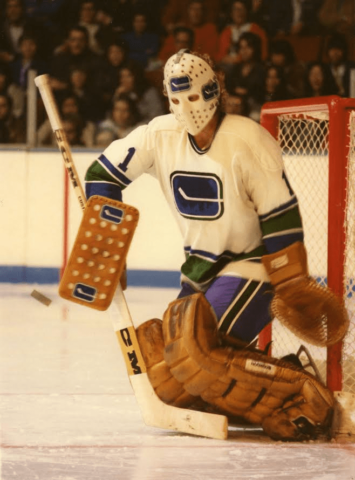
In between, though, he had a successful stint with the Chicago Black Hawks and shared the Vezina Trophy with Tony Esposito in 1971-72.
Related: Jets 1978-79 Avco Cup-Winning Season
By 1978-79, after playing for the Minnesota North Stars and Washington Capitals, Smith found himself with the World Hockey Association’s Indianapolis Racers. The Racers, however, folded 25 games into the campaign, which would be the WHA’s last before the NHL -WHA Merger. Without a gig, Smith joined the Jets in early February, 1979 to complement 21-year-old Finnish goaltender Markus Mattson and the 35-year-old Joe Daley.
“This may make them stronger in goal,” Winnipeg Free Press sportswriter Hal Sigurdson noted at the time. “It will unquestionably make them funnier, Smitty being one of the great characters of the game.”
(from ‘Added strength in goal,’ Winnipeg Free Press, 02/17/1979.)
Smith’s play down the stretch for the Jets was nothing to laugh at, however. He posted a 7-3 record in 11 regular season games, went 8-2 in the playoffs, and was the winning goaltender in the the Jets’ Avco Cup-winning Game 6 victory over the Edmonton Oilers.
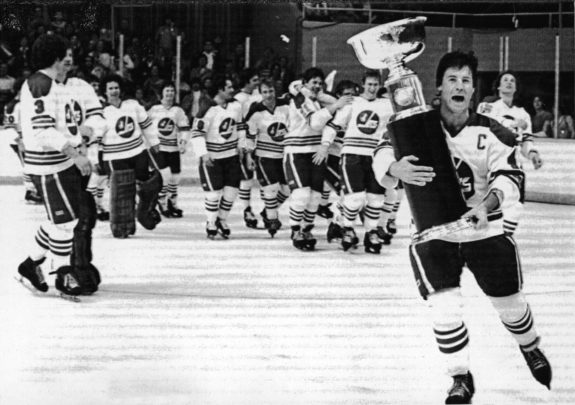
Smith stayed with the Jets in their inaugural NHL season, posting a 4-11-4 record in 20 games with a 4.09 goals against average and .873 save percentage. His last ever-NHL start came on Jan. 21, 1980, where he allowed seven goals on 30 shots in a 7-3 loss to the Hartford Whalers.
He was then sent down to the Tulsa Oilers — the Jets’ Central Hockey League affiliate — where he played 22 games before retiring. Smith still holds the NHL record for most losses in a season with 48 in 1971.
Serge Savard (1981-1983)
Serge “The Senator” Savard enjoyed outrageous success with the Montreal Canadiens. In 14 seasons with the Habs between 1966-1981, the left-handed defenseman had his name engraved on the Stanley Cup no fewer than eight times (in 1968, 1969, 1971, 1973, 1976, 1977, 1978, and 1979.) In 1968-69, he became the first-ever blue liner to win the Conn Smythe Trophy for recording four goals and six assists in 14 playoff games. A decade later, he won the Bill Masterson Memorial Trophy.
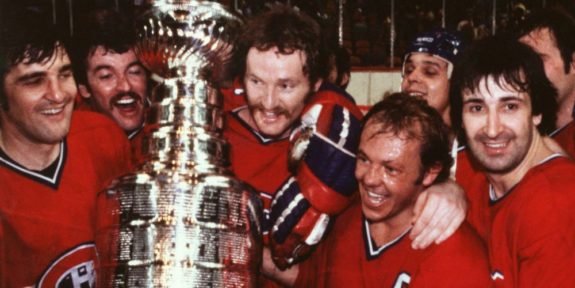
By summer 1981, Savard had played 917 games for the Canadiens and was going to retire to pursue activities such as investing in real estate and renovating apartment complexes. However, Jets’ GM John Ferguson Sr. — an old teammate of Savard’s between 1966-71 — chose Savard in the waiver draft and attempted to convince the then-36-year-old to put off retirement and patrol the blue line in Winnipeg.
“I saw that the Jets weren’t the same as the year before or else I wouldn’t have come back, but the club was going for first place,” Savard recalled in a 2003 interview. “I hadn’t enjoyed the game the previous few years. Things were on a sour note with the Canadiens. There were a lot of young defensemen waiting in line. I made the right decision. But I felt wanted by Winnipeg and the atmosphere was very different.”
Serge Savard on joining the Jets
Savard spent the next two seasons on the Jets’ blue line, mentoring youngsters Dave Babych, Moe Mantha, Don Spring, Tim Waters, among others. He recorded two goals and five assists in 47 games in 1981-82 as the Jets improved by 48 points and qualified for the playoffs for the first time in the NHL era, and four goals and 16 assists for 20 points in 1982-83, where the Jets once again made the postseason. “My duties were clear,” Savard explained. “No one expected me to carry the club on my shoulders.”
Related: Ones That Got Away: The Winnipeg Jets’ Dave Babych
After the latter season, the Canadiens bought Savard out of the final year of his Jets contract so he could become the Canadiens’ GM. He won two more Cups — in 1986 and 1993 — in the role and amassed a regular season record of 483-337-116 between 1983-95. Now 74, the Hall of Famer serves as the Canadiens’ senior vice president of hockey operations.
Bryan Marchment (1988-1991)
Unlike Smith and Savard, Bryan Marchment began his career in Winnipeg rather than ending it there. The Jets selected the truculent defenseman 16th overall in 1987 after a 44-point, 238 penalty minute season for the OHL’s Belleville Bulls.
Marchment made his pro debut with the Jets on March 29, 1989, against the Los Angeles Kings and played one more game that season. Despite being a high draft pick, he spent most of his Jets’ career with the AHL’s Moncton Hawks. However, he did suit up for seven Jets’ games in 1989-90, and 28 more in 1990-91.
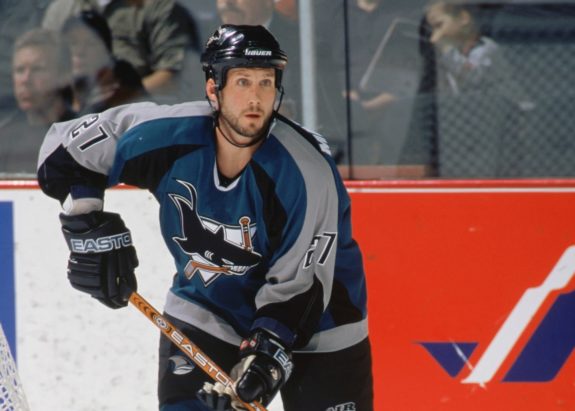
The Jets traded Marchment to the Chicago Blackhawks that summer and perhaps it’s a good thing they did. Marchment turned out to be a waste of a high-round selection as he never came close to replicating the offensive output he produced in juniors (he never exceeded 22 points in a season.)
Throughout his 926-game NHL career with nine different teams — the Hartford Whalers, Edmonton Oilers, Tampa Bay Lightning, San Jose Sharks, Colorado Avalanche, Toronto Maple Leafs, and Calgary Flames in addition to the Jets and Blackhawks — the man nicknamed “Mush” was one of the NHL’s biggest villains and dirtiest players.
A heavy hitter, Marchment often dished out head shots and engaged in a variety of other thuggish, bush-league tomfoolery, with one publication even calling him “the master of knee-on-knee hits.” He was suspended no fewer than 13 times in his first 12 NHL seasons and was accused of attempting to injure many players including Pavel Bure, Wendel Clark, Mike Gartner, Paul Kariya, and Sami Salo.
Here’s one example of how hated he was: during his tenure with the Oilers, he took the Dallas Stars’ Joe Nieuwendyk into the boards from behind, tearing Nieuwendyk’s ACL, during a 1998 playoff game. In the regular season, Marchment had been suspended for elbowing Mike Modano.
Marchment reported that he received a written death threat and two threatening phone calls at the hotel after the Nieuwendyk hit; signs in Reunion Arena for Game 2 simply read “kill Marchment.”
Kris Draper (1990-1993)
Kris Draper is one of the most recognizable Red Wings of all time, having suited up for 1137 games over 17 seasons for the squad, recording 161 goals and 203 assists for 364 points in those games, and winning four Stanley Cups.
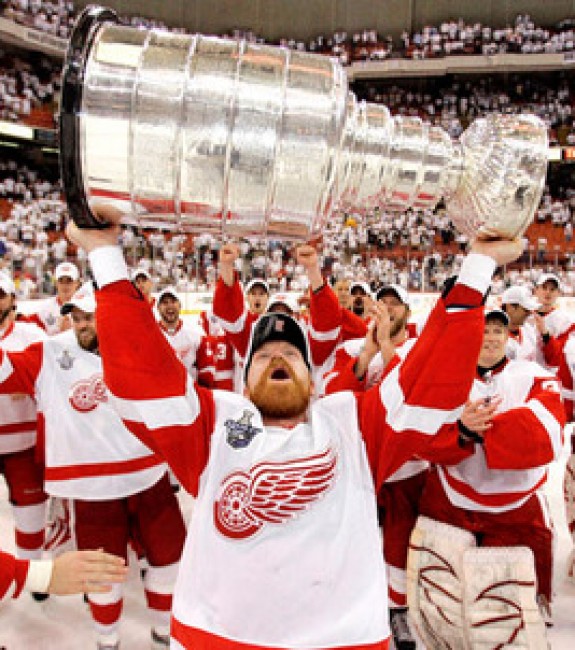
However, before the adept face-off specialist was a member of the famous “Grind Line” with Kirk Maltby and either Joe Kocur or Darren McCarty — which THW’s own Tony Wolak wrote “could compete against and shut down any other forward line in the NHL” with their physicality, hustle, and hockey IQ — Draper was a Winnipeg Jet.
Related: How the Detroit Red’ Wings Grind Line Revolutionized the NHL
The Jets chose Draper 62nd overall in 1989 and he made his Jets debut on Oct. 4, 1990, scoring a goal against the Toronto Maple Leafs. Draper played just 20 games for the Jets between then and the summation of the 1992-93 season, however, scoring two more goals.
In 1993, Draper was traded to the Red Wings for only $1. Yes. That’s right. $1. It’s safe to say the Red Wings got good return for that buck.
Since retiring after the 2010-11 season, Draper’s worked in the Red Wings’ front office. In 2019, he was promoted to director of amateur scouting by GM and former teammate Steve Yzerman.
Stu Barnes (1991-1993)
A first-round pick who got away, the Jets selected centre Stu Barnes 4th overall in 1989.
After two outstanding seasons with the WHL’s Tri-City Americans where he recorded 141 and 144 points respectively, Barnes made the Jets out of training camp in 1991-92 and made his debut on Oct. 4.
Barnes played 46 games for the Jets as a rookie, talling eight goals and nine assists while also playing 30 games for the Jets’ AHL affiliate at the time, the Moncton Hawks. In his sophomore season that followed, the Spruce Grove, Alberta native played 38 games and modestly improved his point totals, recording 10 goals and 12 assists.
Barnes began the 1993-94 season with the Jets but was traded to the Florida Panthers on Nov. 25, 1993 in exchange for Randy Gilhen. He played 191 games over parts of four seasons in the Sunshine State and was part of their 1996 squad that lost the Stanley Cup Final to the Colorado Avalanche.
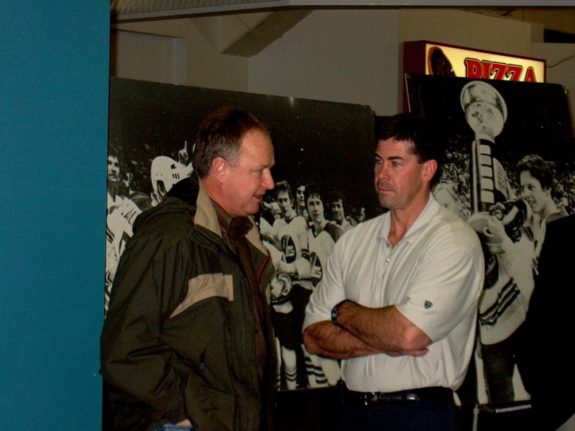
Barnes continued to be dealt and dealt often; in Nov. 1996, the Panthers traded him to the Pittsburgh Penguins, with whom he had the most productive offensive season of his career — his 65-point 1997-98 campaign.
In March 1999, he was traded to the Buffalo Sabres for Matthew Barnaby. Barnes — a clutch playoff performer who recorded 30 goals and 32 assists for 62 points in 116 career-postseason games — helped the Sabres to the Final that spring, but the Sabres were bested by the Stars as Brett Hull’s controversial triple-overtime goal lifted the Stars to Game Six glory. Most don’t know Barnes scored at 18:21 of the second period to tie that game 1-1.
Barnes ended up spending five seasons in Buffalo and served as captain for two, between 2001-2003.
Late in the 2002-03 season, he was traded for the fourth and final time, this time to the Stars. He played 329 games there, the most he suited up for for any team, before retiring in August, 2008 with 1136 games — just 102 of which were with the Jets — under his belt.
Barnes served as an assistant coach for three seasons in Dallas before moving on to co-own his former junior club in the Tri-Cities. In 2017, Barnes was re-hired as a Stars’ assistant coach.
How many of these players did you know were Jets? Comment below.
